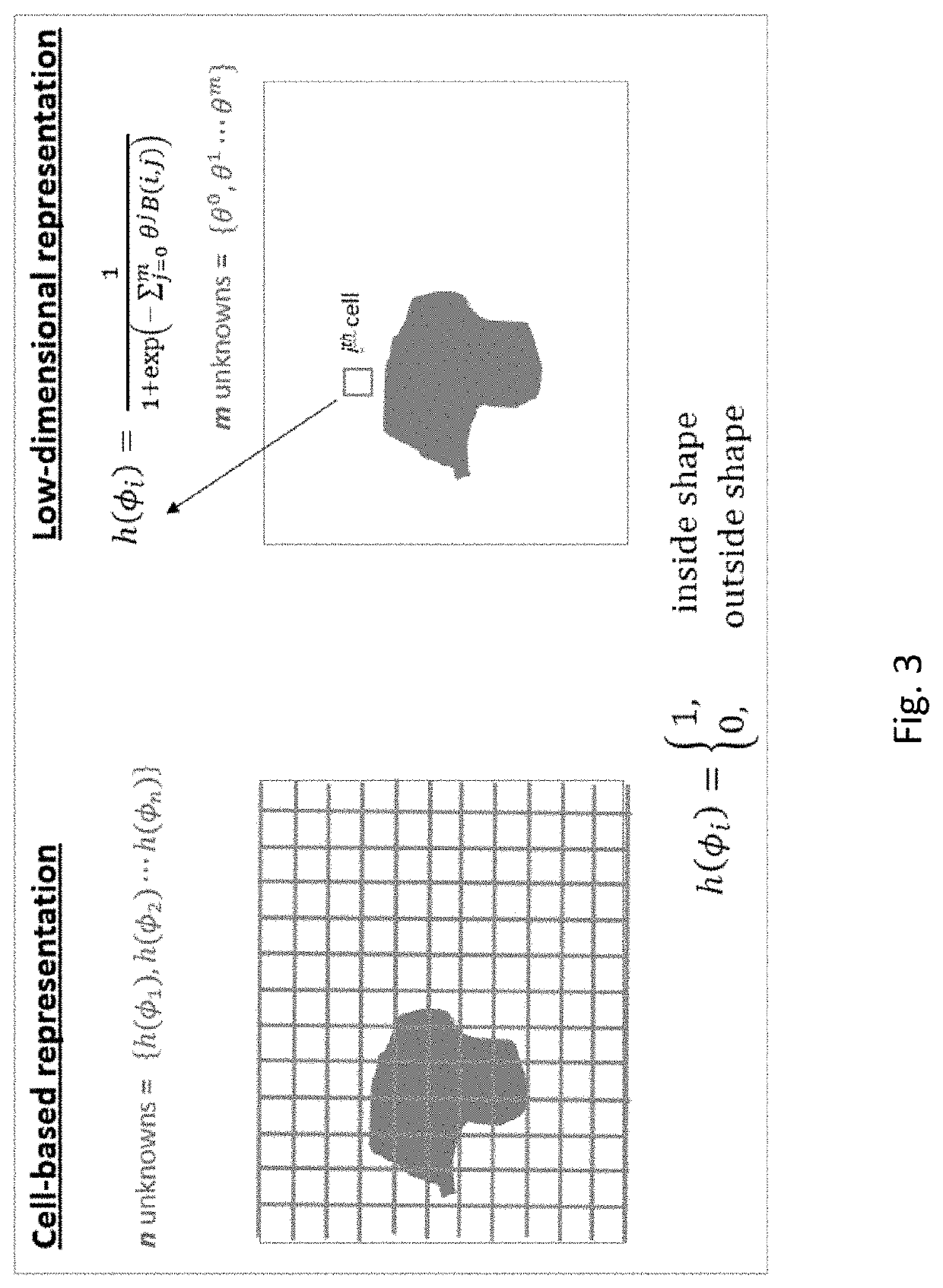Inversion of large, nearly-homogeneous geobodies via ultra low-dimensional shape representation using orthogonal basis functions
- Summary
- Abstract
- Description
- Claims
- Application Information
AI Technical Summary
Benefits of technology
Problems solved by technology
Method used
Image
Examples
Embodiment Construction
[0037]Exemplary embodiments are described herein. However, to the extent that the following description is specific to a particular embodiment, this is intended to be for exemplary purposes only and simply provides a description of the exemplary embodiments. Accordingly, the invention is not limited to the specific embodiments described below, but rather, it includes all alternatives, modifications, and equivalents falling within the true spirit and scope of the appended claims.
[0038]The present technological advancement addresses the problem of geophysical inversion of large, nearly-homogeneous geobodies in a Full Waveform Inversion (FWI) framework. Of particular interest are subsurface salt bodies, as they serve as excellent seals for hydrocarbon reservoirs. For instance, there are many examples in the Gulf of Mexico and more recently offshore Brazil, where oil-bearing carbonate rocks are buried under thick complex layers of salt. Salt bodies offer a sharp contrast (with respect t...
PUM
 Login to View More
Login to View More Abstract
Description
Claims
Application Information
 Login to View More
Login to View More - R&D
- Intellectual Property
- Life Sciences
- Materials
- Tech Scout
- Unparalleled Data Quality
- Higher Quality Content
- 60% Fewer Hallucinations
Browse by: Latest US Patents, China's latest patents, Technical Efficacy Thesaurus, Application Domain, Technology Topic, Popular Technical Reports.
© 2025 PatSnap. All rights reserved.Legal|Privacy policy|Modern Slavery Act Transparency Statement|Sitemap|About US| Contact US: help@patsnap.com



